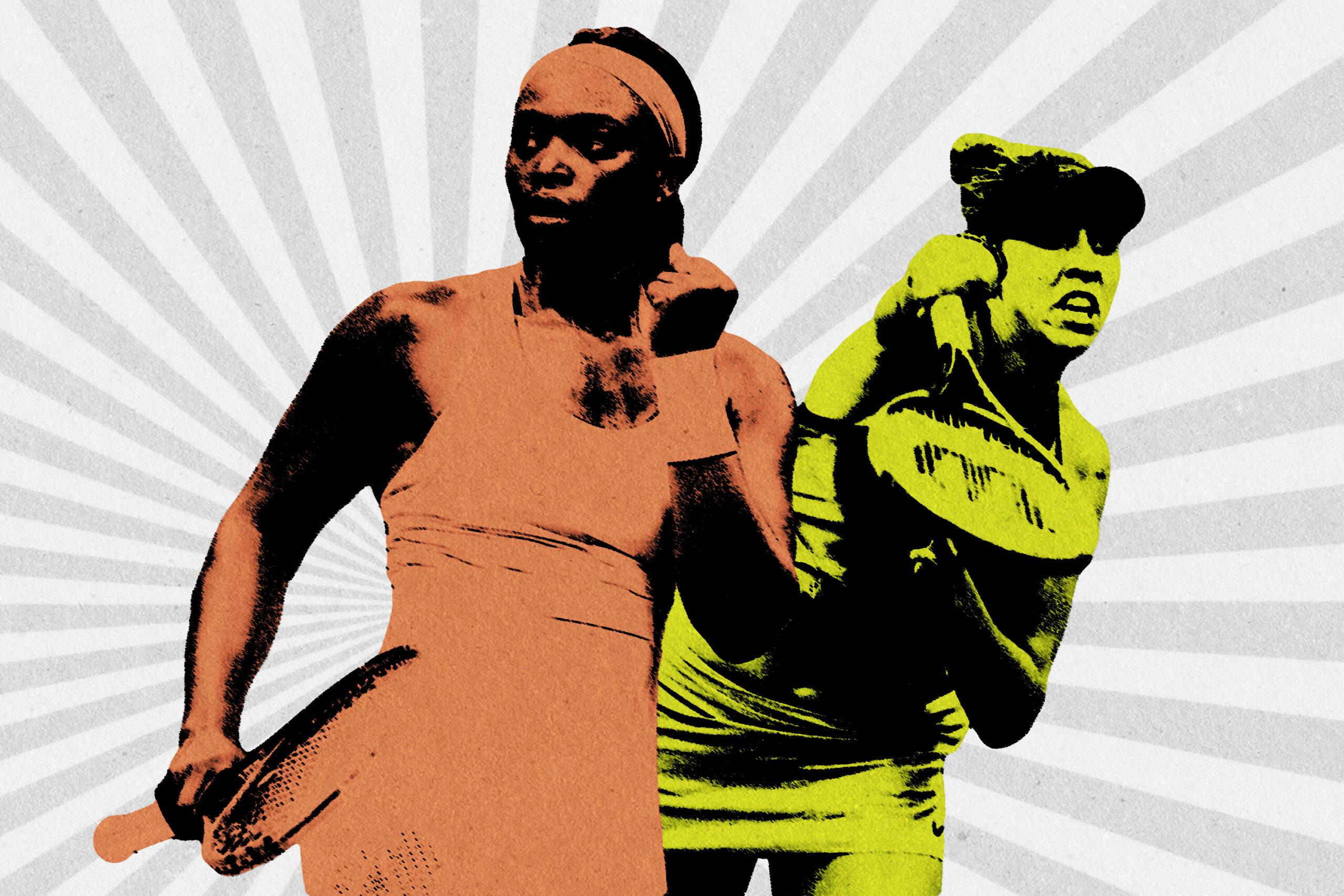
Sloane Stephens was 4 years old when Venus Williams took the court for her first Grand Slam singles final, a defeat at the U.S. Open. Stephens was 20 years old when she told ESPN The Magazine, against her worried mother’s protests, that her relationship with Serena Williams wasn’t nearly as rosy and aspirational as the media hoped and dreamed. And on Thursday night, in the thrilling third set of what started out as an oddly lopsided and at times even lifeless match, Stephens was 24 years old when she dispatched Venus Williams, 6-1, 0-6, 7-5, to reach the U.S. Open final on a night in which all four semifinalists who competed were, improbably, American women.
Improbably because that hadn’t happened since 1981. Improbably also because three of the four women playing in this year’s semifinals were aged 25 or younger, while the fourth was 37. And most improbably because none of them were named Serena Williams.
When a mighty oak falls in the forest, the saplings nearby don’t really give a damn about whether anyone is around to hear the resounding thud. They’re too busy squinting into the sunlight, angling to ascend into that new patch of blue sky. When Serena Williams announced after winning the Australian Open that she’d be taking the rest of the year off to give birth to a child, the long-looming canopy suddenly opened up. And during this year’s U.S. Open, the American women rose to fill it.
Venus Williams — OK, definitely no sapling, but certainly someone whose growth had long appeared stunted — turned in her best season in nearly a decade, falling to an already-pregnant Serena in the Australian Open final and then reaching the final Saturday of Wimbledon. Last night, standing across from Stephens, Williams was up 5-4 in the third set and two points away from reaching her third Grand Slam singles final of 2017, and her first one in Flushing since 2002. For Stephens, simply being on the court for this match was a personal victory: After foot surgery in January, she had seen her world ranking slip to 957th fewer than two months ago. She entered the U.S. Open unseeded. In the semifinals on Thursday night, she took root.
During the aforementioned game at 5-4, locked at 30-all, Stephens served, kickstarting a 25-stroke rally in which Williams attacked and attacked and attacked again and Stephens, somehow, kept defending, kept her cool, kept getting the ball back over the net, kept the spectators rapt, kept herself in the match. And then she kept on doing all of that until she had won the damn thing, taking 10 of the match’s final 11 points and fully winning over a crowd that, while not against Stephens, did sound throughout like they were kinda hoping that Williams would win.
You could almost see decades of experience processing through Williams’s head near the end of the rally. She hit the ball to the same spot three times in a row, each time with a new path and velocity: First she hit a pillow-soft shot, then took a huge “here comes the winner” windup and fired, straight and flat. Then she tried for a third time, angling her racket in a way that made the audience hold its breath and wait to see how freaking wicked the spin would be when the ball grazed the court. But on each iteration the ball came back like a cat, and suddenly it was Stephens who was winding up for the winner, a dazzling down-the-line drive of a backhand that seared past Williams and drew appreciative, instinctive gasps of delight from the onlookers in Arthur Ashe Stadium, many of them clad in red, white, and blue.
A big serve gave Stephens the game, tied the third set at 5-all, and led to a sequence even more bonkers than that rally had been. A desperation backhand by Stephens to save a Williams drop shot rainbowed right over Williams’s outstretched racket at the net and landed right on the baseline, earning the 24-year-old a standing ovation. (Stephens later called the shot a “lob thingy.”) When Williams hit a ball that juuuuust cleared the net, Stephens turned it into an impossibly low-angle crosscourt winner that felt less like tennis than pinball. “Hopefully we make SportsCenter tomorrow, hint hint,” Stephens ribbed an ESPN interviewer on center court after she won. “I just worked my tail off and ran every ball down.”
The second match of the evening was an enormous comedown from the highs of the opening act; 22-year-old Madison Keys easily dispatched her friend CoCo Vandeweghe, who had a tough night from start to finish, 6-1, 6-2. According to the broadcast team, Vandeweghe got caught in classic New York City traffic on her way to Flushing Meadows. She had one of her by-now-familiar displays of emotion on the court, appearing to scream in the direction of her coaches: “How is it OK?!” presumably after they made the error of blandly assuring her that it was. In the press conference that followed the loss, she teared up and said she felt “crummy.” It was a disappointment, for sure, but it wasn’t all her fault: Keys has been playing impressive tennis for weeks.
Like Stephens, Keys had surgery not long ago, a second wrist operation in May following the French Open, and also like Stephens, “The Future of American Tennis?” acclaim early in her career gave way to the ups and downs of the professional circuit. Stephens went through a number of coaches before settling in 2015 on Kamau Murray, himself a protégé of Billie Jean King. Keys, who’d spent time at Chris Evert’s tennis academy as a kid, split with her coach, the Grand Slam champion Lindsay Davenport, in 2015 before reuniting with her last year. Earlier this season, Keys and Davenport were keeping their short-term expectations low. “Bizarrely, we were really focused on 2018,” Davenport told The New York Times. “It’s weird to say that, but she hasn’t had a proper off-season in a couple years because of different injuries … the team joke is, ‘2018 Aussie Open, baby!’”
Both Stephens and the 22-year-old Keys came of age in an era when the Williams sisters were already dominating professional tennis. Keys told Vogue earlier this year that she first wanted to play because she liked a tennis dress that Venus was wearing on TV. As for Stephens: It’s been said that she had a Serena poster in her room growing up, but the reality is a bit more complicated: She told ESPN The Magazine in 2013 that she’d once attended a tennis event as a kid with the goal of getting Serena to sign it, and was blown off three times. After that, she turned her interest to Kim Clijsters. Years later, Stephens defeated Serena in the Australian Open quarterfinals and said, “I think I’ll put [up] a poster of myself now.” Serena wasn’t amused. It shouldn’t be surprising, then, that Venus wasn’t in the mood to talk about legacies and heroes after losing to Stephens on Thursday night. In the post-match press conference, when she was prompted to opine on the significance of both U.S. Open finalists growing up with her as a role model, Williams replied, “To be honest, I’m … here to win my matches.”
The last time an American woman who wasn’t Serena or Venus made a Grand Slam final was in 2005, when Davenport lost at Wimbledon. The last time someone other than a Williams sister won one, it was Jennifer Capriati in Australia in 2002. But now it’s a certainty that both bits of trivia will be updated at the conclusion of the championship match on Saturday, regardless of whether it’s the powerful Keys, with her hundred-plus miles-per-hour serves or the resilient Stephens, with her infuriating ability to run down anything at the baseline, who goes home with the trophy. “For American tennis, there’s no question marks,” Stephens said on Thursday night. “The proof is in the pudding and it’s all facts. American tennis, here we are.” No one would have expected this at the start of 2017, but daylight has lit up the thickets of American women’s tennis, and new life has found a way.

